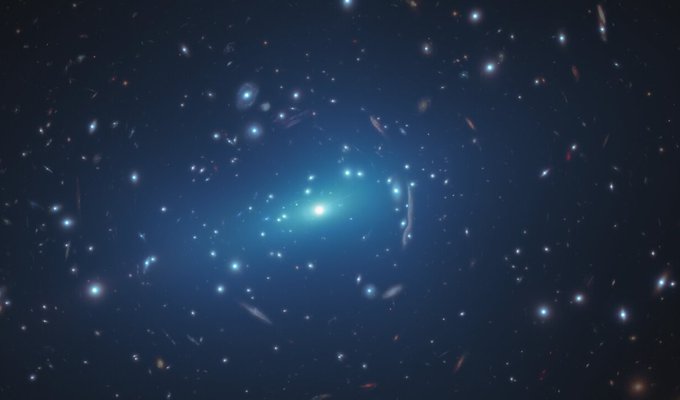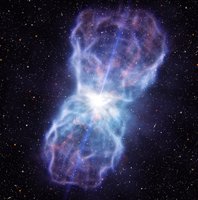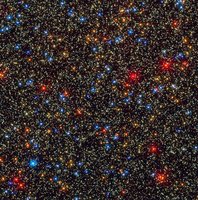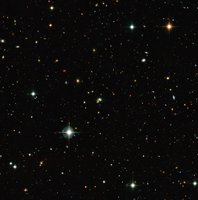Can you spot the squiggly lines and funny shapes in this image? These are galaxies! They appear strange to us because their light has been bent out of shape due to the pull of gravity from other galaxies and dark matter! This is called gravitational lensing and you can learn more about it in this Space Scoop. Gravitational lensing is the effect that was used to map the dark matter shown in this image!

The Universe is full of unanswered questions. One of the biggest questions astronomers are trying to answer is what is the Universe made of? Astronomers know that the Universe is full of dark matter, but we still don’t fully understand it…
The Mysterious Dark Matter Dark matter is a mysterious and peculiar material that got its name because it doesn’t give off any light - it’s totally invisible. Yet, astronomers think there is 5 times as much of this strange material in the Universe as there is normal matter that we can see. We know that dark matter exists because we can see the effect that it has on the things around it. Like seeing paw prints in the snow made by an invisible dog. And we know that it mostly hangs out around galaxies - we believe it’s what helps keep them held together! A Missing Ingredient? Astronomers have recently made an exciting discovery: something may be missing from how we understand dark matter to behave! This was found by combining data and images from the NASA/ESA Hubble Space Telescope and the European Southern Observatory’s Very Large Telescope. The international team of astronomers investigated galaxy clusters in their study. Galaxy clusters are groups of galaxies that are clumped together. They are also where most of the Universe’s dark matter is found. In these galaxy clusters, dark matter is heaped like in a mountain range, with lots of high peaks and valleys. The team created a map to understand how the dark matter is spread out in three galaxy clusters (like the one shown in this image). They were surprised to find that smaller clumps of dark matter (like the lower valleys of a mountain range) are much stronger than they previously believed. This likely means there is something missing in our understanding of how dark matter behaves with stars and galaxies throughout the Universe.
There will be many more studies conducted in the future to help uncover the mysteries of dark matter!
Image credit: NASA, ESA, G. Caminha (University of Groningen), M. Meneghetti (Observatory of Astrophysics and Space Science of Bologna), P. Natarajan (Yale University), the CLASH team, and M. Kornmesser (ESA/Hubble)


















